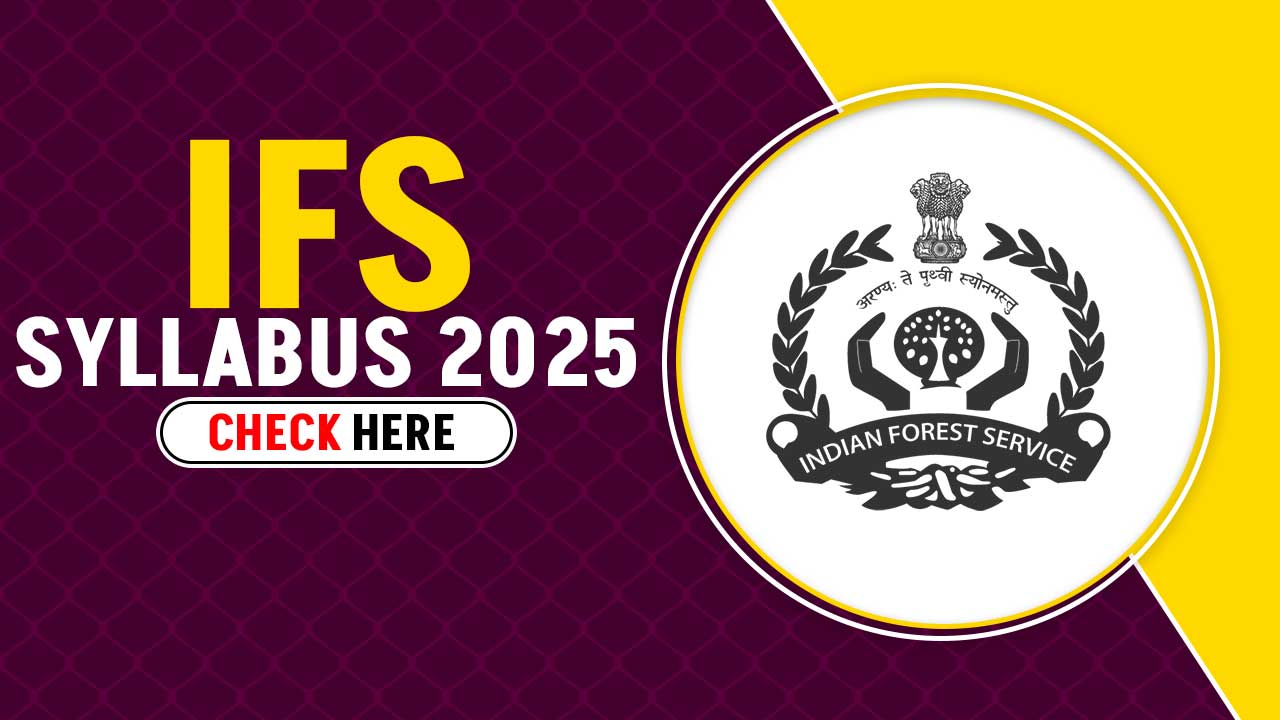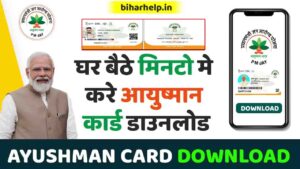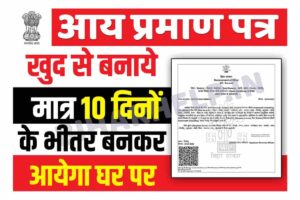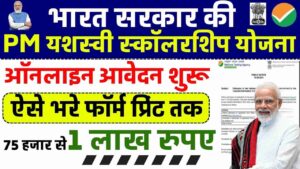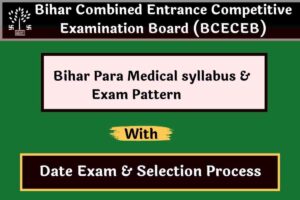IFS Syllabus 2025: संघ लोक सेवा आयोग भारतीय वन सेवा परीक्षा 2025 प्रारंभिक और मुख्य परीक्षा क्रमशः 25-05-2025 (रविवार) और 16-11-2025 (रविवार) को आयोजित करने जा रहा है। जो व्यक्ति परीक्षा में शामिल होने जा रहे हैं, वे यहाँ से IFS Syllabus 2025 और परीक्षा पैटर्न देख सकते हैं। UPSC IFS Syllabus 2025 की मदद से, व्यक्ति अपनी प्रारंभिक और मुख्य परीक्षाओं की अच्छी तैयारी कर सकेंगे।
IFS Syllabus 2025 – Overview
| Name of the Commission | Union Public Service Commission |
| Name of the Article | UPSC IFS Syllabus 2025 |
| Exam Name |
|
| Type of Job | Government Job |
| Who Can Apply? | All India |
| Exam Mode | Offline |
| Online Application Starts From | 22nd January 2025 |
| Last Date of Online Application | 11th February 2025 |
| UPSC IFS Prelims Exam Date | 25-05-2025 (Sunday) |
| UPSC IFS Main Exam Date | 16-11-2025 (Sunday) for 7 days |
| Official Website | @upsc.gov.in |
UPSC IFS Selection Process 2025
- Preliminary Examination
- Mains Examination
- Interview/ Personal Test
UPSC IFS Exam Pattern 2025
यूपीएससी भारतीय वन सेवा भर्ती परीक्षा 2025 के लिए प्रारंभिक और मुख्य दोनों परीक्षा पैटर्न की विस्तृत जानकारी यहाँ दी गई है। आप यहाँ प्रारंभिक और मुख्य परीक्षा पैटर्न दोनों देख सकते हैं।
UPSC IFS Prelims Exam Pattern
- General Studies Paper II will be a qualifying paper in nature
- with a minimum qualifying mark of 33%.
- Negative marking: 1/3rd mark.
- Question Types: Objective (Multiple Choice Questions).
- Duration: 2 Hours for each paper.
|
Particulars |
No. of Questions |
Marks |
Duration |
| Paper I: General Studies | 100 | 200 | 02 Hours |
| Paper II: GS (CSAT) | 80 | 200 | 02 Hours |
|
Total |
180 |
400 |
IFS Mains Exam Pattern 2025
- Question Type: Written/ Descriptive
- Papers III, IV, V, and VI –
- Any two subjects from the list of optional subjects may be chosen.
- There will be two papers for each subject
- Only the answer scripts of those who received the minimum marks set by the Commission for Paper-II (General Knowledge) will be evaluated.
- The written Main exam will have six papers and the medium will be English only.
- Paper I and Paper II are on General English and General Knowledge respectively.
- Papers III, IV, V, and VI require the selection of two optional subjects from the list given below.
- Each subject will have two papers – Paper I and Paper II.
- Each paper has a maximum time duration of 3 hours.
UPSC IFS Mains Exam Pattern
|
Papers |
Maximum Question |
Maximum Marks |
| Paper 1 General English | 300 | 300 |
| Paper 2 General Knowledge | 300 | 300 |
| Paper 3 Optional Subject – I | 200 | 200 |
| Paper 4 Optional Subject – I | 200 | 200 |
| Paper 5 Optional Subject – II | 200 | 200 |
| Paper 6 Optional Subject – II | 200 | 200 |
|
Total |
1400 questions |
1400 marks |
Optional subjects include
- Agriculture
- Agricultural Engineering
- Animal Husbandry & Veterinary Science
- Botany
- Chemistry
- Chemical Engineering
- Civil Engineering
- Forestry
- Geology
- Mathematics
- Mechanical Engineering
- Physics
- Statistics
- Zoology
Provided that the candidates will not be allowed to offer the following combination of subjects:
- Agriculture and Agricultural Engineering
- Agriculture and Animal Husbandry & Veterinary Science.
- Agriculture and Forestry.
- Chemistry and Chemical Engineering
- Mathematics and Statistics.
- Of the Engineering subjects viz. Agricultural Engineering, Chemical Engineering, Civil Engineering, and Mechanical Engineering — not more than one subject;
UPSC IFS Personality Test /Interview
- Maximum Marks for IFS Interview: 300
- Questions will be asked from
- current affairs,
- modern currents of thought and
- new discoveries happening around him, both within and outside his state or country.
UPSC IFS Syllabus 2025
UPSC IFS Prelims Syllabus
The UPSC IFS Syllabus 2025 will consist of two question papers, each of which will be set from the topics listed below:
|
Subject |
UPSC IFS Syllabus 2025 |
| Paper I |
|
| Paper-II |
|
UPSC IFS Mains Syllabus 2025
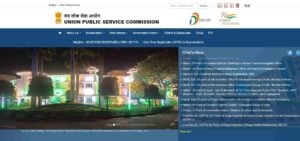
Check here UPSC IFS Syllabus 2025 for the mains examination –
|
Subject |
UPSC IFS Syllabus 2025 |
|
UPSC IFS Syllabus 2025 for Mains Compulsory Subjects |
|
| Paper I (General English) |
|
| Paper II (General Knowledge)
|
|
|
UPSC IFS Syllabus 2025 for Mains Optional Subjects |
|
| Agriculture | PAPER-I
PAPER-II
|
| Agricultural Engineering |
Paper I Section A
Section B
PAPER-II Section A
Section B
|
| Animal Husbandry and Veterinary Science |
PAPER-I
Paper-II
|
| Botany |
PAPER-I
PAPER-II
|
| Chemistry |
PAPER-I
PAPER II
|
| Chemical Engineering |
PAPER-I Section A
Section B
Paper-II Section A
Section B
|
| Civil Engineering |
PAPER-I Part-A
Part-B
Part-C
Part-D
PAPER-II Part-A
Part-B
Part-C
Part-D
|
| Zoology |
PAPER-1 Section-A
Section- B
PAPER-II Section-A
Section-B
|
| Statistics |
Paper-I
Paper-II
|
| Physics |
Paper I Section-A
Section-B
Paper-II Section-A
Section-B
|
| Mechanical Engineering |
Paper I
PAPER-II
|
| Mathematics |
Paper-I Section-A
Section-B
Paper-II Section-A
Section-B
|
| Geology |
Paper-I Section-A
Section-B
Paper-II Section-A
Section-B
|
| Forestry |
PAPER-I Section A
Section B
PAPER II Section A
Section B
|
Important Link
| UPSC IFS Notice 2025 | |
| Official Calendar | Click Here |
| Official Website | Click Here |
| Join Telegram | Click Here |
